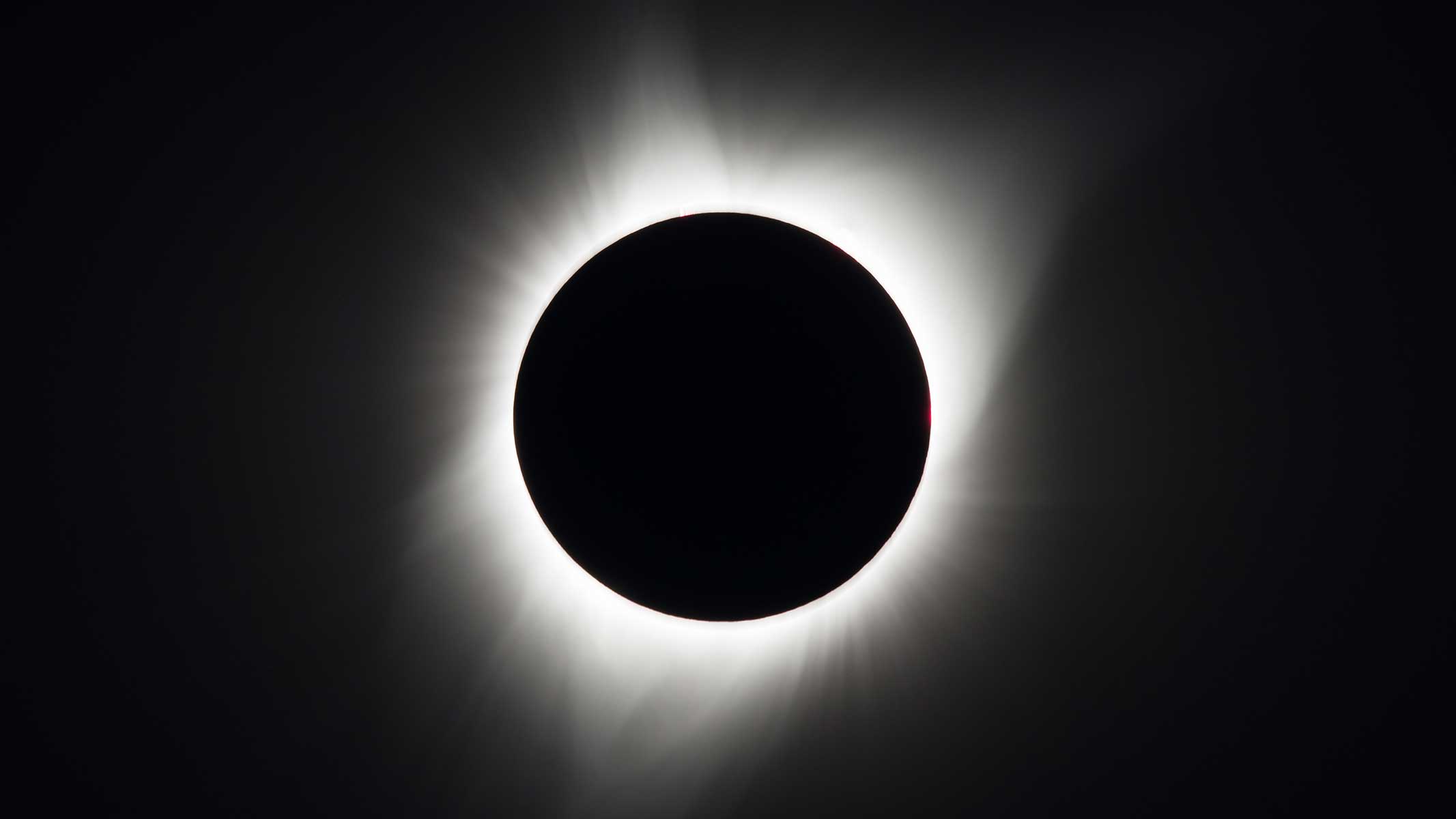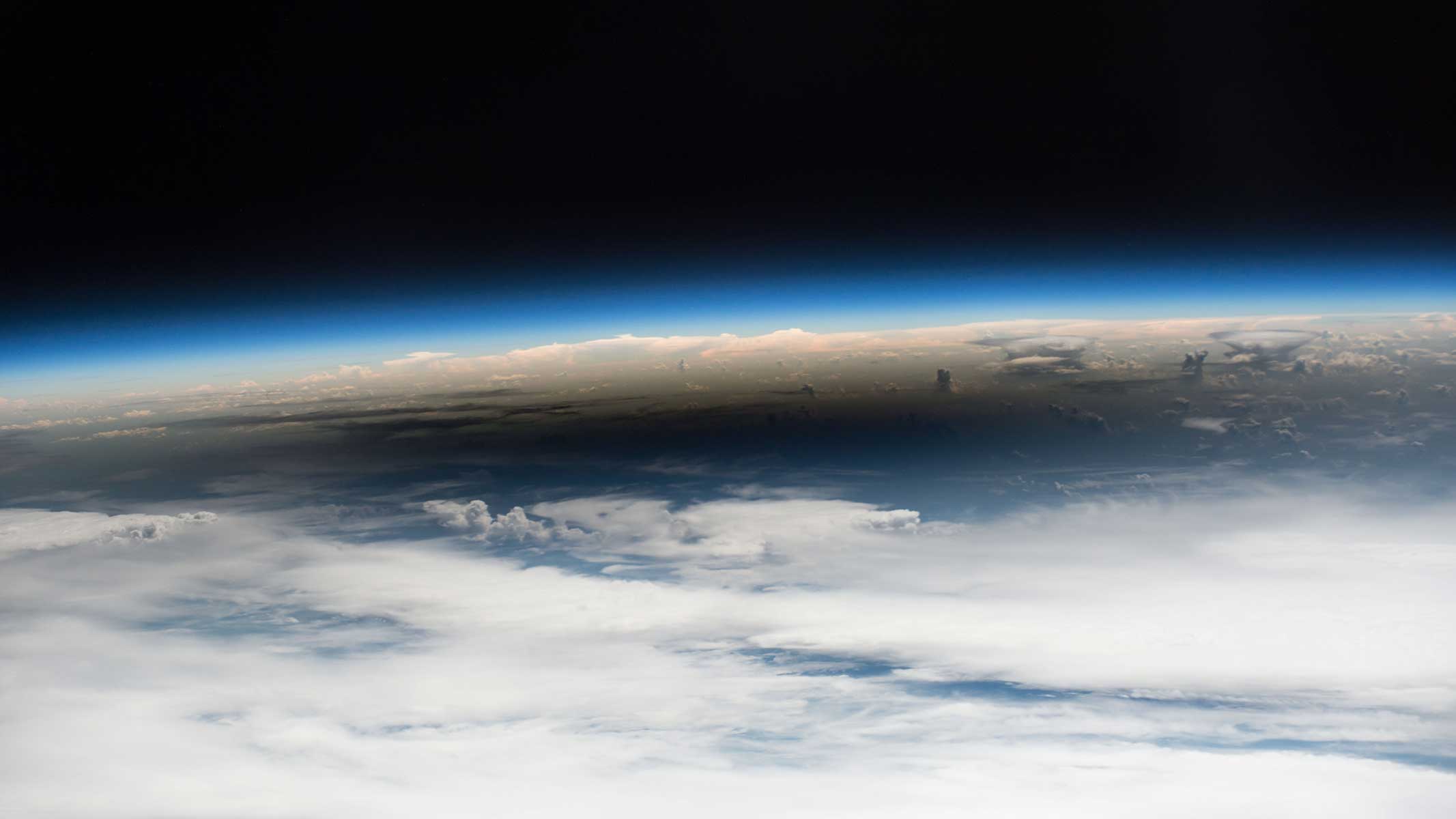We're two years away from the Great North American Solar Eclipse of April 8, 2024!
Book your travel, buy your glasses, and get ready for the show of the decade on April 8, 2024

On April 8, 2024, the Great North American Solar Eclipse will cross the country, plunging a 124-mile-wide swath of land stretching from Mexico to Canada into night-like darkness.
First, the crowds gather, spreading out picnic blankets, setting up lawn chairs and stringing up hammocks. There's a social, even jovial atmosphere until the sunlight begins to dim, and an unnerving shadow seeps across the entire landscape like a rising tide. The chatter quiets as eyes lift to the sky. And finally, it happens — the sun is consumed entirely by a pitch-black disk, nighttime arrives in the middle of the day, and everyone gasps then cheers.
The spectacle of a total solar eclipse is an awe-inspiring moment, one that many skywatchers travel the world to witness. In 2017, the United States experienced its first total solar eclipse in nearly 40 years, with an impressive 88 percent of the adults in the country turning out to view the show.
Now, the next one is on the horizon. Two years from today, on April 8, 2024, the Great North American Solar Eclipse will nearly bisect the country, plunging a 124-mile-wide swath of land stretching from Mexico to Canada into night-like darkness.
Two years might seem like a long time away, but given the popularity of total solar eclipses, it's just about time to start making viewing plans, especially if you plan on traveling for the event.
Video: Total Solar Eclipse in April 2024 - See the path of totality
Related: Total solar eclipse 2024: Here's what you need to know
What is a total solar eclipse, anyway?
Let's break this question down into three parts. An eclipse occurs when the Earth, sun, and moon are aligned so that one celestial body casts a shadow onto the other.
Breaking space news, the latest updates on rocket launches, skywatching events and more!
A solar eclipse is when the moon moves between the sun and the Earth, causing its shadow to move across the Earth's surface — from places within that shadow, the sun will appear to darken.
A total solar eclipse is when the moon is just the right distance away from the Earth that it blocks the entirety of the sun. (An annular eclipse, on the other hand, is when the moon is farther away from the Earth, thus it doesn't block all of the sun).
Why is the Great North American Total Solar Eclipse of 2024 a big deal?
Total eclipses aren't altogether that rare, occurring approximately every 18 months. But because the shadow of the moon is quite small when projected onto the Earth, only a tiny fraction of the planet actually experiences any given eclipse. On average, a specific location will only experience a total solar eclipse roughly every 375 years.
So not only is it somewhat uncommon for the United States to experience a total solar eclipse — it's only seen 21 of them since the country was founded in 1776 — but also it's very uncommon for a total solar eclipse to have such a long path across a wide section of the country. Before the 2017 eclipse, the last cross-country total solar eclipse happened in 1918. And following the 2024 eclipse, a cross-country total solar eclipse won't happen again until 2045.
The eclipse will also last longer and cast a wider shadow than the 2017 eclipse, meaning it'll be more easily viewed by more people.
When is the solar eclipse?
The Great North American Total Solar Eclipse of 2024 will occur on April 8, 2024, starting in Mazatlán, Mexico, at 10:51 a.m. local time. It'll move northeast across the continent, all the way through Newfoundland and Labrador in Canada, where the eclipse will begin at 4:07 p.m. local time.
Note that those starting times are for the partial eclipse, when the moon begins crossing in front of the sun. The best show, however, is during totality — that's when the moon fully covers the sun and the sky goes dark. Totality during the 2024 eclipse will last up to 4 minutes and 26 seconds at its maximum duration, which will occur over central Texas around roughly 1:30 p.m. local time.
Where can I see the eclipse?
Though a partial eclipse will be viewable from the majority of the lower 48, the path of totality crosses through Texas, Oklahoma, Arkansas, Missouri, Kentucky, Illinois, Indiana, Ohio, Pennsylvania, New York, Vermont, New Hampshire, and Maine. For the best viewing, make sure you're located within the path of totality.
Though we're two years away from the 2024 eclipse, it'd be wise to start looking at accommodations now — hotels and vacation rentals are likely to book up quickly within the path of totality.
How can I see the solar eclipse?
The most important rule when viewing solar eclipses is to wear special glasses approved by the International Organization for Standardization (ISO). Never look at the sun directly without appropriate eye protection, as your eyes could be irreparably damaged. The exception is when the moon completely covers the sun during totality — then it's safe to look at the sun without glasses.
Once you're set with eyewear, all you have to do is head to the path of totality during the eclipse and look up. Keep an eye out for special programming hosted by museums, libraries, and schools.
If you can't travel to the path of totality, you might still be able to view a partial eclipse — if you look at the sun through your eclipse glasses, the sun will look like it has a chunk taken out of it, but the sky won't darken quite the same as it will within totality.
Furthermore, the eclipse will likely be live-streamed by observatories across North America, so you can safely and comfortably view the show from your own home.
Follow us on Twitter @Spacedotcom and on Facebook.

Space.com contributing writer Stefanie Waldek is a self-taught space nerd and aviation geek who is passionate about all things spaceflight and astronomy. With a background in travel and design journalism, as well as a Bachelor of Arts degree from New York University, she specializes in the budding space tourism industry and Earth-based astrotourism. In her free time, you can find her watching rocket launches or looking up at the stars, wondering what is out there. Learn more about her work at www.stefaniewaldek.com.



